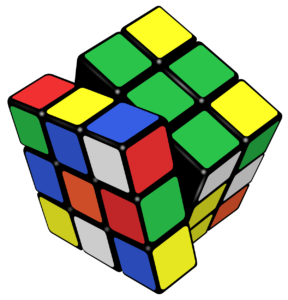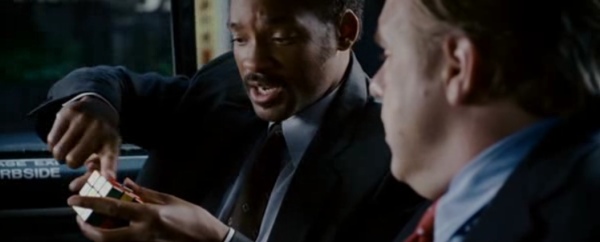
Rubik’s Cube for Visually Impaired People
What does a Rubik’s cube stand for you?

A colorful set of blocks which we have seen hanging in shops?
Something that the so called nerds and geeks play with?

Will Smith from “The Pursuit of Happiness” solving it real quick and hence leaving his future boss in awe?

Well for some, it could just be an inaccessible game; a game you cannot play. Because it requires the player to use just colors to play which can leave a huge huge population outside considering the low vision, no vision and color blind. And that according to WHO standards could be in whopping billions if seen across the world. Add it to the motor skills required to move the blocks which again blocks many more not because the game is tough to play but just because it is not an accessible game.
Have you ever thought of how to make it accessible? Is it really possible? How can we do it? Well the answer is – If there is a well there definitely would be a way.
Some of the quick and easy solutions are:
- Mark each side (color) with a sign:
Rubik’s cube has 6 sides and six colours. Marking all the same coloured blocks with a sign in would be a simple and easy process for it to be used by people with visual disability.
For example:
-
- All blue blocks can be marked 1, all the red blocks can be marked 2 and so on. Unique symbols can be used to mark the 6 sides of the cube.
- For example:
- Symbols can be shapes like rectangle, square, circle etc,
- A sound for each side which is unique or even the color of the cube that can be spelt out.
- Marking a number in English and also writing it down in Braille format would not only ensure the game is accessible but also compliant with universal design.2. Ensure Rubik’s cube is easy to rotate:
Most Rubik’s cubes are tightened and need lot of effort to move them in different directions. Ensuring that we can move them simply when we want to turn the blocks ensures it’s easy to handle for people having motor disabilities.
3.Customized Rubik’s cube that can follow verbal instructions to turn with specific sides given a number and the rows and columns are marked.
These are the ideas we had when we thought of an accessible Rubik’s cube? Do you have anything interesting to add to this list or saw a more innovative product built out of it?
If yes, write to us and spread the word about accessibility.
On a different note, would love to see any engineering student taking it up for an internship and coming up with a cool model of an accessible Rubik’s cube.
